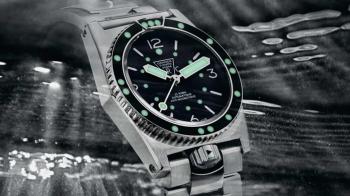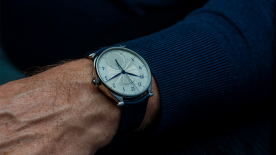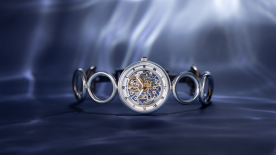French territories worldwide include some of the most beautiful marine environments, their diversity matched only by the legendary complexity of the nation’s bureaucracy. It was this acronym-infested administrative layer cake through which ZRC had to blaze a trail in order to secure accreditation of its Grands Fonds dive watch, water-resistant to 300 metres and known to connoisseurs as the GF300.
A Herculean Task
The lineage of the timepiece mirrors the development of the professional dive watches of the 1960s. It was at that time that Toulon Arsenal’s procurement department (‘AF’) sought some new kit: a dive watch.
In support of this request, it supplied an Identification Bulletin (‘BI’) to two central authorities: the French naval commissariat technical department (‘STCM’) and its commissariat central command (‘DCCM’). They duly gave their approval and thus the French Navy (Marine Nationale, ‘MN’) got the go-ahead for dive watches; ZRC won the contract. Its Grands Fonds 300 received official accreditation in 1960. For some brands, this would have been the ultimate accolade, but the GF300 was only just getting started.

Close Partnership
Constructive dialogue soon developed between ZRC and the navy’s divers. They reported that the location of the crown at 3 o’clock was an issue: various movements of the wrist and gear handling operations could lead to the crown being rotated a few millimetres, thus compromising the watertightness of the case.
So ZRC went back to the drawing-board. A few months later, the brand returned with a new crown, located at 6 o’clock. This involved more than simply changing the position: ZRC also developed a winding stem tube machined from solid, making the Grands Fonds 300 the only watch to have a truly single-piece case. Furthermore, ZRC chose to make the case from modified steel, reinforced with molybdenum to increase its toughness.
Continuous improvement
ZRC also perfected the system used to secure the bracelet to the case, introducing a retractable lug to protect the crown: the bracelet could only be secured if the crown it rests against was properly screwed down; in other words, the GF300 couldn’t be worn on the wrist unless the crown was properly in place. The bracelet was also optimised by adding two extendable links, allowing it to be adjusted to the thickness of any diving suit.
Back from the depths
After having been adopted by the likes of the French Navy’s Toulon diving school, the Third Division of the Toulon Mine Clearance Group, the Hubert Commando Unit and the crew of Jacques Cousteau’s Calypso, the GF300 returned to prominence in 2015. ZRC issued a contemporary version for the golden jubilee of the France’s Mediterranean Mine Clearance Group ("GPD")
The 2015 reissue formed the cornerstone of the new-generation GF300 series. It went on to grace wrists in other military units, including the Strategic Oceanic Force (‘FOST’) in 2016-2017 and the French Navy’s diving school at St-Mandrier, which trains underwater operations units.
Today, the GF300 retains the highly distinctive character that’s made it what it is, along with simple, effective solutions that oddly enough, have never been imitated by others. One other solution that’s been added more recently is the ECS system. This allows the inside of the bezel to be cleaned by flushing it with fresh water, so as to ensure it’s not fouled by salt crystals forming there after a dive. It’s another obvious — and patented — invention that underscores the highly operational nature of the GF300 and its proven effectiveness, unchallenged for over six decades now.
This year GMT Magazine and WorldTempus have embarked on the ambitious project of summarising the divers watch since 2000 in The Millennium Watch Book - Divers watch, a big, beautifully laid out coffee table book. This article is an extract. The Millennium Watch Book - Divers watch is available in both French and English here:




